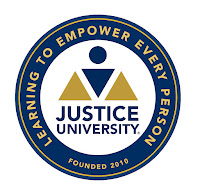To this day there are people who insist that the “New Deal” of Franklin Delano Roosevelt not only saved the United States from the Great Depression (ahem, Part III, there having been two previous phases, the first from 1873 to 1878, the second from 1893 to 1898), it was also THE perfect social program and should be duplicated today as in (for example) the so-called “Green New Deal.”
The only problem is that the original New Deal never actually did what its champions claim it did, and in fact seems to have done the exact opposite. The New Deal was to all intents and purposes dead in the water by 1935, and it was gearing up for World War II, not the New Deal, that brought the United States out of the Great Depression, the New Deal programs and policies actually having doubled the duration of the economic downturn, from the previous two “Great Depressions” that lasted five years each, to the ten years of the Great Depression of 1930 to 1939.
 |
| James A. Farley |
Still, as we saw in the previous posting on this subject, with the right pitch — and the economic disenfranchisement of large numbers of Americans — it was possible to sell pretty much anything that offered a potential way out of a seemingly hopeless situation. This included the American version of Fabian socialism foisted on the country by FDR.
Nor was it too difficult, with Jim Farley using his political expertise to push the program through, until it became obvious the New Deal wasn’t working. What really clinched the matter, however, was the quasi-religious tone Roosevelt was able to give his program. This was essential, even though by this time the characterization of socialism as “the Democratic Religion” had long since passed from living memory.
 |
| Fr. Charles E. Coughlin |
That is why, in addition to manipulating orthodox Catholics and conservative-leaning Democrats through Farley’s loyalty, Roosevelt also publicly supported Neo-Catholicism and obtained the endorsements of “social Catholics.” These, as the renegade priest, Father Edward McGlynn had done, subordinated the doctrines of organized religion and all faiths and philosophies to political expedience. (Ibid., 206-208, 212.) Father Charles Coughlin (whom Farley despised) and Msgr. John A. Ryan (whom Farley never mentioned) were the ideal front men for this purpose.
FDR was already planning on State control of the financial system to ensure that irresponsible private interests would not be able to interfere with government social policy. To clinch Catholic support, and probably assisted by Farley, Roosevelt’s speechwriters found passages in the recently promulgated Quadragesimo Anno that could be taken out of context to promote a statist economic program.
 |
| Franklin Delano Roosevelt |
These referred to a “despotic economic dictatorship . . . consolidated in the hands of a few” (Quadragesimo Anno, §§ 105-109.) in the private sector. To counter this very real threat, Roosevelt proposed the even greater danger of monopolizing power over money and credit in the hands of the State. As Moulton described this development,
This shift is a reflection of the philosophy that not only is it a proper function of the Government to assume control over the entire credit system, but that only the Government can be depended upon to exercise such control in the interest of the public welfare as a whole. This conception appears to be the result of two factors — the failure of the former system of control to prevent financial crises, and the greatly increased importance of government fiscal and financial operations in the larger scheme of things. (Harold G. Moulton, Financial Organization and the Economic System. New York: McGraw-Hill Book Company, Inc., 1938, 417.)
 |
| Msgr. John A. Ryan |
Many otherwise thoughtful Catholics and other people believed the financial system was the lackey of Wall Street and under the control of “the Jews.” Roosevelt’s Detroit speech thereby proved popular with Catholics and others influenced by Coughlin, who had referred to “modern Shylocks.” (Shlaes, The Forgotten Man, op. cit., 170.)
As a result, with the support of Farley, Ryan and Coughlin — Coughlin with his large popular following being more immediately useful than Ryan — Roosevelt was assured of the Catholic vote. At the same time, by letting someone else carry the water for the Jew haters, FDR also garnered the Jewish vote.
 |
| Al Smith |
Some members of the U.S. Catholic hierarchy, however, spoke of “increasing agitation of ‘cunning propagandists’,” (Mueller, The Church and the Social Question, op. cit., 119.) while a few organizations such as the Central Bureau of the Catholic Central Verein of America in Saint Louis (Ibid., 118-120) expressed grave reservations about Roosevelt’s programs. Nevertheless, among them Farley, Ryan and Coughlin secured the support of the bulk of the hierarchy and of most Catholics for the New Deal at a critical time.
Farley, though, however useful among politically minded Catholics, women and African-Americans, had little or no influence with the hierarchy or in other Church circles, nor apparently did he desire to have any. Although proud of his Catholic beliefs and heritage, he avoided being obvious about it. This is understandable after seeing how Al Smith’s Catholicism had wrecked the Happy Warrior’s presidential aspirations. As we shall see in the next posting on this subject, however, neither Catholicism nor anything was allowed to stand in the way of socialism.
#30#

